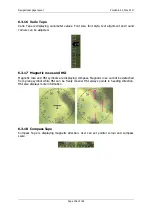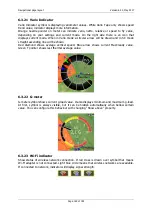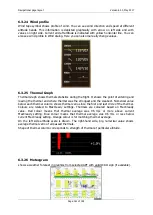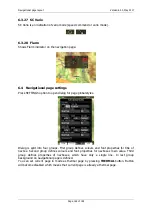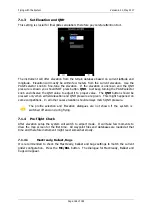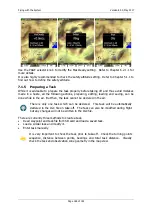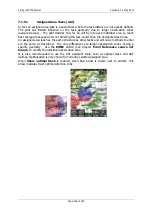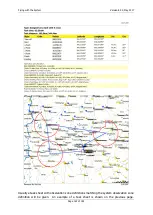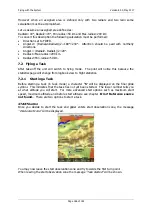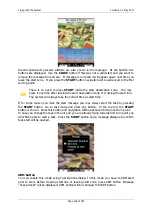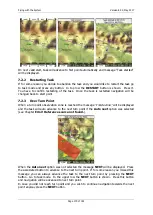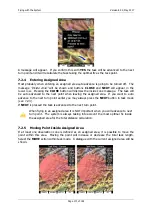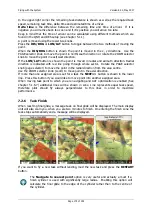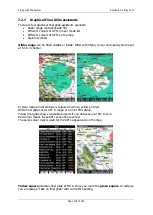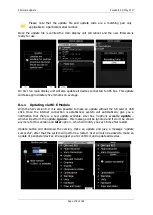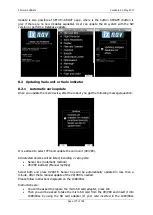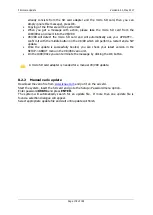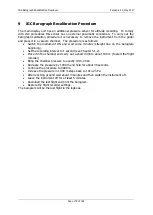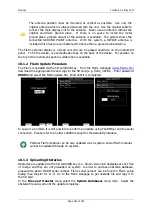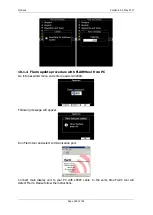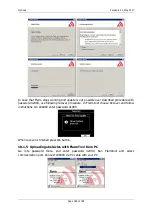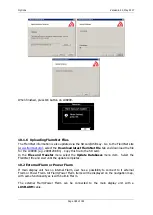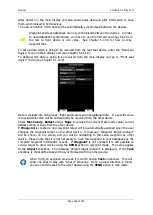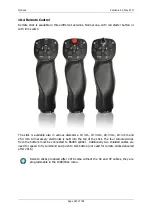
Flying with the System
Version 6.03, May 2017
Page 172 of 192
In the upper-right corner the remaining task distance is shown as well as the required task
speed, remaining task time, delta time and estimated time of arrival.
Delta time
is the difference between the remaining time and time of arrival. If it is
negative you will arrive back too soon and if it is positive you will arrive too late.
Keep in mind that the time of arrival can be calculated using different methods which are
found in the QNH and RES setup (see Chapter 5.1.1).
A point is moved using the lower two knobs.
Press the
DIS/BRG
or
LON/LAT
button to toggle between the two methods of moving the
point.
When the
DIS/BRG
button is shown the point is moved in the x, y directions. Use the
PAGE selector knob to move the point in north/south direction or rotate the ZOOM selector
knob to move the point in east/west direction.
If the
LON/LAT
button is shown the point is moved in radial and azimuth direction. Radial
direction is indicated with red line going through whole sector. Rotate the PAGE selector
knob (page selector) to move the point in the radial direction from the area centre.
Use the ZOOM selector knob (zoom) to move point in the axial direction.
If more than one assigned area is set for a task the
NEXT>>
button is shown in the lower
line. Press this button if you would like to move point into another assigned area.
When moving task point to which you are navigating and AAT optimization is enabled (See
chapter 5.1.6.7) additional lines will be shown in zone. Line represents equal task speed,
therefore pilot should fly always perpendicular to this lines in order to maximize
performance.
7.2.6
Task Finish
When reaching final glide, a message task on final glide will be displayed. The main display
unit will also warn you, when you are two minutes to finish. On entering the finish zone the
task stops automatically and a message will be displayed.
If you want to fly a new task without landing, load the new task and press the
RESTART
button.
The
Navigate to nearest point
option is very useful and actually a must if a
finish cylinder is used with significantly large radius. Enabling this option will
calculate the final glide to the edge of the cylinder rather than to the centre of
the cylinder.

